Sossusvlei Safari
The optimal time to visit Sossusvlei is during Namibia’s cooler, drier winter season, which spans from May to September, with June, July, and August being particularly recommended. This period offers crisp, clear mornings and evenings, which are ideal for activities such as hiking the towering dunes, and provides excellent conditions for photography, ensuring vibrant colours and minimal haze.
While it is possible to experience a significant amount in a single day, it is highly recommended to allocate at least two to three nights in the Sesriem area. This allows for two full days within Sossusvlei, providing ample opportunity to explore thoroughly without rushing and to capture the best light during sunrise and sunset.
For a comprehensive guide to planning your Sossusvlei adventure, including detailed itineraries, crucial driving tips for navigating the park’s unique terrain, strategic accommodation choices for optimal access, and insights into the most captivating photo opportunities and activities available, please continue reading for in-depth information.
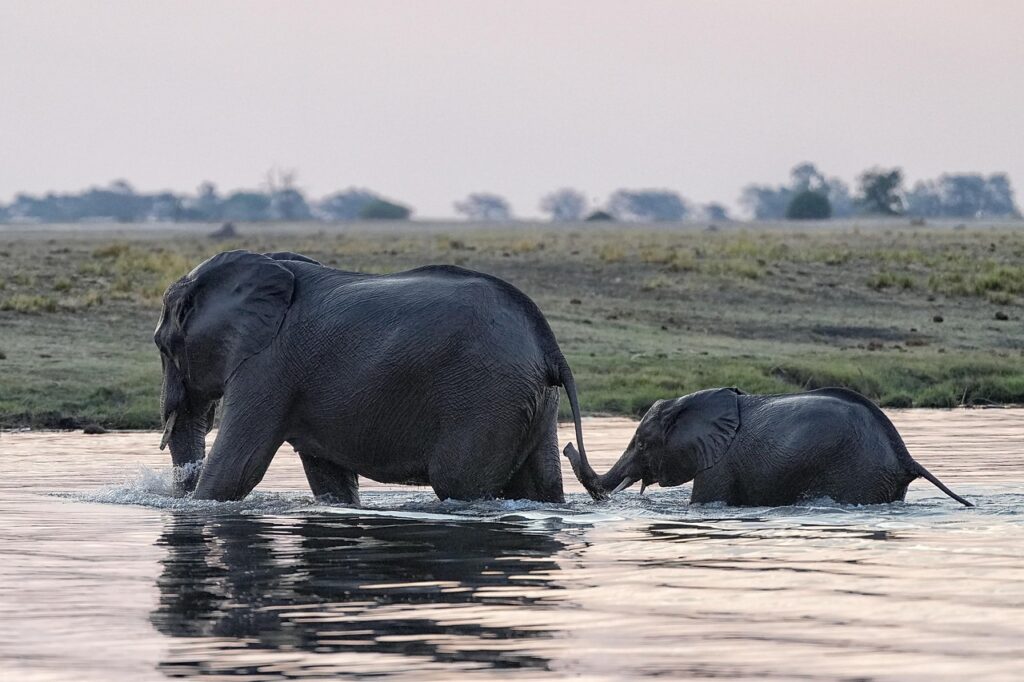
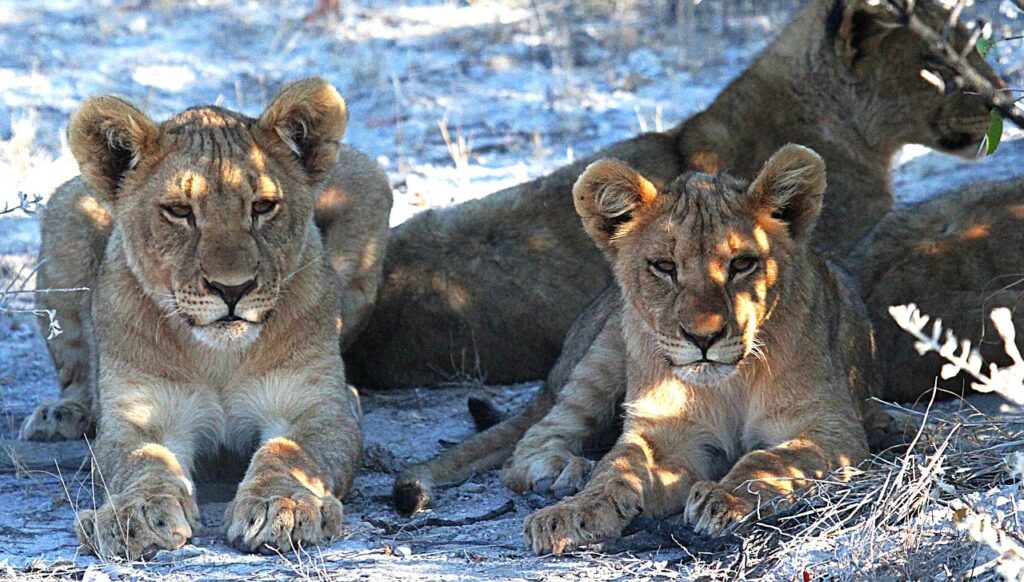
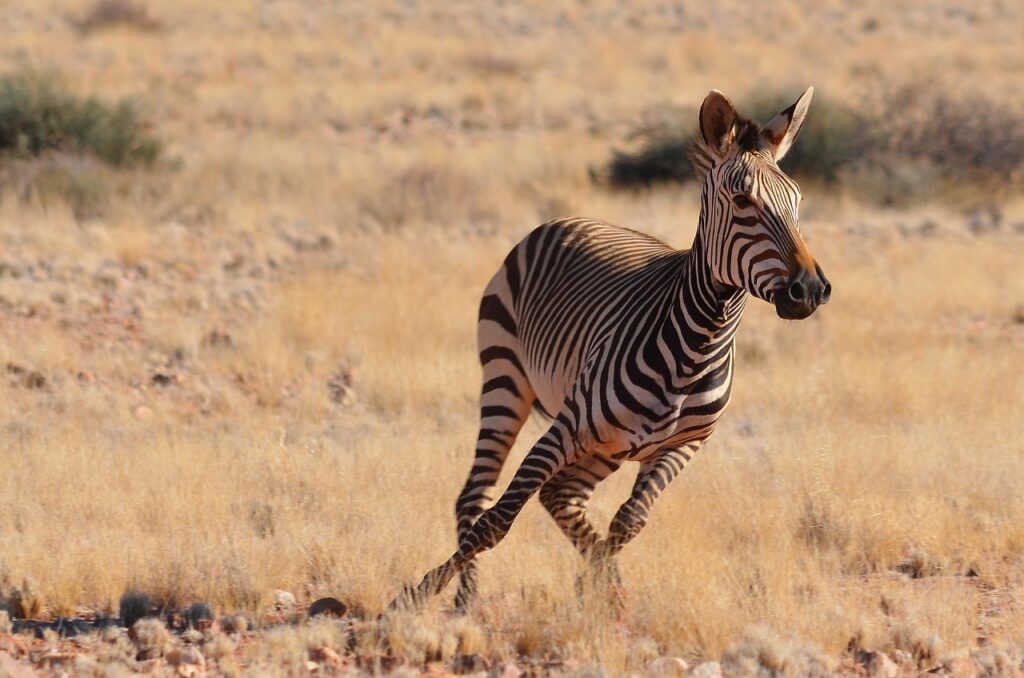
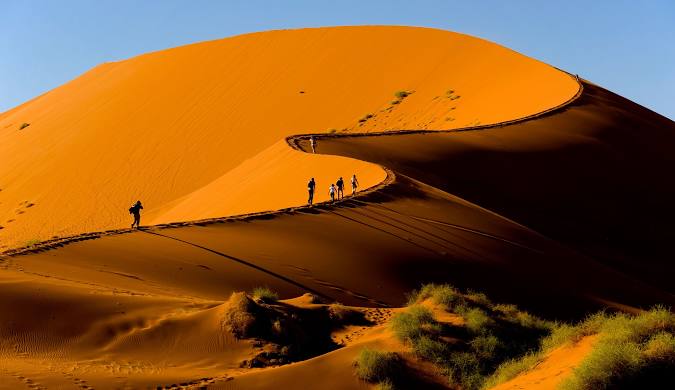
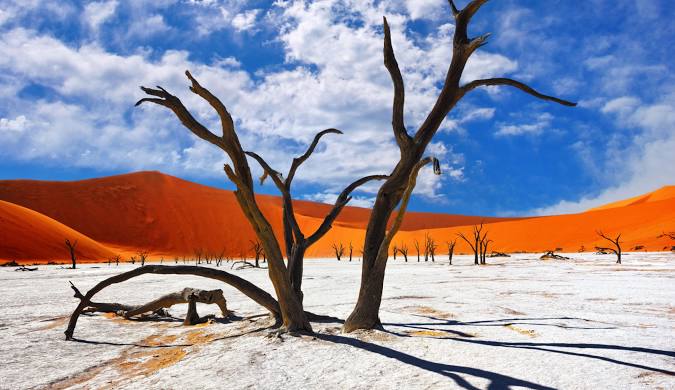
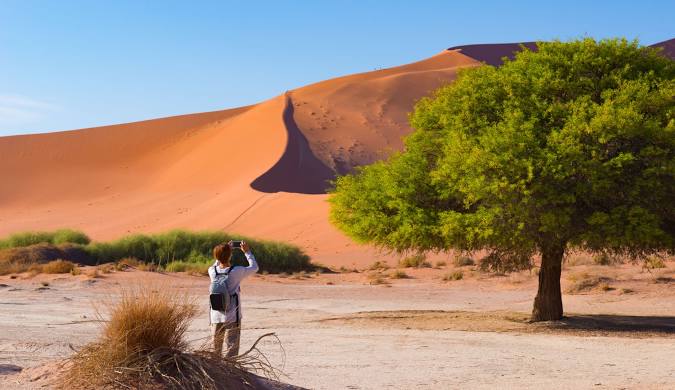
I. Introduction: Redefining “Safari” in Namibia’s Ancient Desert
- A. Sossusvlei: A Unique “Safari” Experience
- Unlike traditional wildlife safaris focused on game viewing, a Sossusvlei safari centres on stunning landscapes, silence, light, and the feeling of remoteness. It is described as being “more about beetles than big cats”.
- Often described as stepping onto “another planet”, Sossusvlei is a “dreamscape of burnt-orange dunes” and one of the “most photogenic places on earth”. The colours are a “perfect palette” of orange and blue.
- B. Location and Significance
- Sossusvlei is located in the south-western part of Namibia, within the Namib-Naukluft National Park.
- It is part of the Namib Desert, which is recognised as the oldest desert in the world.
- Visiting Sossusvlei is considered a “non-negotiable visit” for any Namibia trip due to its “awe-inspiring rust-coloured sand dunes”.
II. Exploring the Iconic Landscapes: Key Attractions and Activities
- A. The Majestic Dunes
- Deadvlei: A must-see white clay pan featuring petrified ghostly trees. It offers a “monochrome eeriness” for photography and a surreal experience. Access requires either a 4×4 vehicle or utilising the NWR shuttle service. Visitors are urged not to touch the vulnerable trees. The area is located about an hour’s drive from the park gates.
- Dune 45: This is considered the “most famous dune” in Sossusvlei due to its accessibility for climbing and photography. Hikers on the dune itself can create “really great photos”, highlighting the “fantastic lines” of the dunes. It is roughly 40 minutes from the inner gates.
- Big Daddy: As the highest dune in Sossusvlei (approximately 1,066 feet or 325m tall), it provides “unique views looking down into the clay pan” of Deadvlei. It is considered a challenging, yet rewarding climb.
- Dune 39: While Dune 45 is famous, Dune 39 is considered by some to be the “most photogenic”. It is best photographed “from way back alongside the road with a long lens” to achieve “telephoto compression”.
- The Dead Forest: This location has no official name but is described as a “fantastic place for photos”. It is similar to Deadvlei but located opposite Dune 39. It is particularly striking at sunrise, as the sun “rises through the valley of dunes and offers some incredible back light for the trees”.
- Hidden Vlei: This clay pan, located “over near Deadvlei”, is aptly named as it’s hard to find until you are “right on top of it”. It is “not an obviously awesome photography location like Deadvlei” but offers opportunities for beautiful images of its “dried up mud”, potentially with flowers or bird prints, which can be used as a foreground for dune images.
- Elim Dune: Closer to the park gates, it’s a good spot to capture the “best light” if staying outside the park, and oryx are often seen here.
- Unmarked Dunes: The sources suggest giving “ample time” to pull over and admire random dunes for “unique photographic opportunities”.
- B. Other Natural Wonders
- Sesriem Canyon: This unique geological feature offers a change of scenery from the dunes and is “closer to the village” of Sesriem. It can provide a “shady respite from the beating Namibian sun”. Baboons are often seen near the car park. The canyon was shaped by the Tsauchab River.
- Solitaire: A small, quirky town located “an hour drive from Sesriem”. It is known for its “authentic rusty Mad Max vibes” and is a place to sample “the best apple strudel for many miles”. It also serves as “the only gas station and cafe between Sossusvlei and Walvis Bay”. The town features “quirky artifacts littered around… like abandoned cars sinking into sand”.
- C. Unique Sossusvlei Adventures
- Hot-Air Ballooning: A “once-in-a-lifetime adventure” at sunrise over the Namib Desert. The experience ends with an “Out Of Africa” style Champagne breakfast. The early morning conditions are “ideal ballooning conditions”. Namib Sky Balloon Safaris is a reputable operator.
- Scenic Flights: Another way to gain an “epic vantage point over the dunes”. Options include “doors-off heli ride” with Namibia Helicopter for photographers or Cessna 210 flights with Sossusfly, ensuring “all passengers have a window seat”.
- Stargazing: Sossusvlei is Africa’s sole International Dark Sky Reserve due to minimal light pollution. Many hotels and lodges offer stargazing tours or “Astro Guides” for “navigating the night sky”. The desert also offers “dramatic” night skies and is “blessed with stars”.
- Wildlife Spotting: While not the primary focus (the safari is more about landscapes than big game), the area is home to oryx (gemsbok), springbok, and ostrich. Other animals like black-backed jackals, various reptiles, and insects are also present. Visitors should be cautious as animals often cross roads, especially at dawn and dusk.
III. Planning Your Sossusvlei Safari: Logistics and Practicalities
- A. When to Visit: Best Time of Year
- The cooler and drier winter season (May to September) is highly recommended, with June, July, and August being the “core winter months”. This period offers “crisp clear mornings and evenings”, ideal for hiking and photography.
- Summer is hotter but “less busy”, and offers a chance to witness the “near-miraculous transformation of Sossusvlei after a summer rainstorm”.
- It is advisable to check and avoid “South African school holidays” as the park tends to “get busier and louder”.
- B. Recommended Trip Duration
- A minimum of three nights in Sesriem is recommended, which provides “two full days in Sossusvlei”. This duration allows for visits at both sunrise and sunset to different locations.
- C. Accommodation Choices: Inside vs. Outside the Park Gates
- Staying Inside the Park Gates: This option, provided by the NWR (National Wildlife Resorts), offers early access (an hour before sunrise) and allows you to stay later (an hour after sunset). This is crucial for photographers seeking optimal light and fewer crowds.
- Pros: Longer park access, better light for photography, fewer visitors, reduced driving time within the park, and milder temperatures for exploration. It also allows for the “magical experience of witnessing sunrise and sunset at the dunes”.
- Cons: There are “fewer accommodation options”, which often book up “far in advance”. Options are generally “camping or expensive hotels”, and they may require booking directly through “government-run websites” which are not always user-friendly. Examples include Sossus Dune Lodge and Sesriem Campsite, and Dead Valley Lodge.
- Staying Outside the Park Gates: This means you can only enter at sunrise and must exit before sunset.
- Pros: Offers a “much wider range of accommodation options”, which can be “more affordable” and easier to book, sometimes “last minute”, via sites like Hotels.com and Booking.com.
- Cons: Strict gate times limit access to ideal light conditions for photography, and may result in increased driving times depending on the hotel’s distance from the gate. Sossusvlei Lodge is the closest hotel outside the park.
- Staying Inside the Park Gates: This option, provided by the NWR (National Wildlife Resorts), offers early access (an hour before sunrise) and allows you to stay later (an hour after sunset). This is crucial for photographers seeking optimal light and fewer crowds.
- D. Self-Drive Safari: Navigating Sossusvlei
- Namibia is highly recommended for self-drive safaris, often called “Africa for beginners” due to its low crime rates and good infrastructure.
- A 4×4 vehicle is highly recommended, especially for the “final sandy stretch” to Deadvlei, which is described as a “soft deep bit of sand”.
- Driving Tips for Sandy Roads: Deflate tyres to approximately 22 psi, use all-wheel drive, and maintain consistent speed to avoid getting stuck. Shuttles are available if you prefer not to self-drive this section.
- General Driving Safety: It is advised to avoid driving at night due to poor lighting and wandering animals. Always “fill up petrol whenever possible” as stations can be far apart. Observe speed limits, especially on gravel roads.
- Permits: Required daily and can be purchased at the park gate. They cost 150 NAD per person and 50 NAD per vehicle.
- Navigation: Using a GPS unit with Tracks4Africa is recommended for route descriptions.
- Alternatives: Group tours or shuttle services are available from Windhoek or Swakopmund.
IV. Packing Essentials for Your Desert Adventure
- A. Clothing for Desert Conditions
- Sun Protection: Crucial due to the intense sun. Pack lightweight, breathable, moisture-wicking fabrics (e.g., SAFARITech, BUGTech™) with UPF50+ built-in sun protection.
- Layering: Essential as desert temperatures can fluctuate dramatically. Always pack a warm layer for cold mornings, evenings, or winter, when temperatures can drop below freezing.
- Colours: Safari-friendly colours are recommended. For photography, white clothing is suggested to “stand out best against the red and orange-toned dunes”.
- B. Footwear
- Comfortable, closed-toed walking shoes or lace-up boots are essential for hiking dunes and protecting feet from hot sand. Anti-blister socks are also recommended.
- C. Essential Accessories
- Sun Protection: A wide-brimmed hat, reliable sunscreen (reapply often), sunglasses, and a head/neck scarf are crucial.
- Observation: Binoculars are vital for spotting wildlife and appreciating distant details in the vast landscape.
- Safety/Convenience: A flashlight/torch is essential for dark nights, especially in Dark Sky Reserves. Insect repellent is advisable, along with anti-insect clothing. Always carry more food and water than you think you need.
- D. Photography Gear
- A long lens (e.g., 70-200mm, 100-400mm) is highly recommended for telephoto compression and capturing distant scenes.
- A sturdy tripod is necessary, especially given potential strong winds in the afternoons.
- Drones are not allowed in Sossusvlei.
V. Photography Tips: Capturing the Sossusvlei Dreamscape
- Golden Hour: The best light is found “right after sunrise and just before sunset”, which creates a “soft but dramatic warm glow” and shifting shadows on the sands.
- Composition: Play with light and shadow. Utilise scale by placing subjects (such as people) in front of the massive dunes or Deadvlei to emphasise their grandeur.
- Lens Choice: A zoom lens “makes a huge difference” and helps achieve “telephoto compression”.
- Astrophotography: The minimal light pollution offers incredible opportunities for capturing the night sky.
VI. Combining Sossusvlei with Other Namibian Destinations
- Etosha National Park: It is highly recommended to combine a Sossusvlei visit with Etosha National Park for a richer Namibian experience. Etosha offers “concentrated wildlife viewing” with “over 100 mammal species”, providing a perfect contrast to Sossusvlei’s landscapes. A combined trip requires “at least 10–12 days” to be worthwhile without rushing.
- Other Namibian Highlights: Consider adding Kolmanskop ghost town, Sandwich Harbour, the Kalahari Desert, Skeleton Coast, Spitzkoppe, Swakopmund, and Damaraland.
VII. Conclusion: An Unforgettable Journey into Namibia’s Soul
Sossusvlei is truly a “natural wonder” and often described as a “photographer’s paradise”. The experience offers an “incredible sense of remoteness” and a deep connection with the “raw, ancient, and hypnotic” landscapes. A Sossusvlei safari is not just a trip; it’s an immersive journey into a unique and breathtaking part of the world, leaving you awe-struck and wanting to return.
Think of a Sossusvlei safari as painting with light on an ancient canvas, where every shade and shadow tells a story of time and solitude.
FAQ’s
- What is Sossusvlei and why is it a popular travel destination? Sossusvlei is a dramatic desert landscape located within the Namib-Naukluft National Park in the southwestern part of Namibia. It is a small part of the larger Namib Desert, which is the oldest desert in the world. It’s renowned for its towering, rust-coloured sand dunes, some of the highest on Earth, that change hues with the shifting light. A key highlight is Deadvlei, a white clay pan featuring ancient, petrified camelthorn trees, creating an eerily beautiful and highly photogenic scene. Sossusvlei is popular not for traditional wildlife safaris, but for its unique, surreal landscapes, opportunities for incredible photography, stargazing (it’s home to Africa’s sole International Dark Sky Reserve), and a profound sense of remoteness and silence that makes visitors feel like they’ve stepped onto another planet. Many travellers describe it as feeling like stepping onto another planet. Brendan Van Son stated that Deadvlei was the place that made him want to visit Namibia in the first place, finding it awesome and even better through a lens.
- What are the key photographic locations and activities in Sossusvlei? Sossusvlei offers numerous stunning photographic opportunities and activities.
- Deadvlei: This is the most iconic area and a top priority. It is a white clay pan with ancient fossilised camelthorn trees that are said to have died 900 years ago but never fully decomposed, creating a mysterious landscape. It’s best visited at sunrise for optimal light and fewer crowds.
- Dune 45: This is the most famous dune in Sossusvlei, largely because it’s the closest to the road and easiest to access for climbing. It offers an epic vantage point of the vast landscape and makes great photos when hikers are on it.
- Big Daddy: This is the highest dune in Sossusvlei, at around 1,065 to 1,066 feet tall. Located directly next to Deadvlei, it provides a unique perspective looking down into the clay pan. The climb is considered challenging but rewarding, especially if started early with plenty of water.
- The Dead Forest: This unofficial spot is basically opposite Dune 39 and is fantastic for photos, particularly at sunrise for incredible backlighting of the dried-up trees. It’s not Deadvlei, but a similar dried riverbed area.
- Dune 39: While Dune 45 is famous, Dune 39 is considered the most photogenic by some, especially when photographed from a distance with a long lens for telephoto compression.
- Hidden Vlei: Aptly named, it’s hard to spot until you’re on top of it. This less-visited clay pan near Deadvlei offers opportunities for unique images of dried mud patterns, sometimes with flowers or bird prints. While it can be gruelling to reach in the heat, it offers a more solitary experience.
- Sesriem Canyon: This geological feature is closer to the village of Sesriem and can be a good spot for sunrise or a quick visit, offering a break from dunes and a rare shady respite from the sun. Baboons are often seen lurking around its car park.
- Hot Air Balloon Safaris: For an elevated experience, you can book a hot air balloon ride over the Namib Desert at sunrise. This allows for incredible views of the dunes and desert, with calm conditions. Namib Sky Balloon Safaris is a reputable company.
- Scenic Flights: Another way to get an epic aerial vantage point over the dunes is via a scenic flight, with companies like Namibia Helicopter (for doors-off photos) or Sossusfly (for window seats).
- Stargazing: Sossusvlei boasts some of the lowest light pollution globally, making it Africa’s sole International Dark Sky Reserve. Many lodges offer stargazing tours or astro guides.
- Wildlife Spotting: Beyond the landscape, you can spot wildlife like Oryx, Springbok, and Ostriches.
- When is the best time of year to visit Sossusvlei and for how long? The cooler and drier winter season, typically from May to September (with June, July, and August being core winter months), is generally considered the best time to visit Sossusvlei. This period offers crisp, clear mornings and evenings, which are ideal for active exploration like hiking dunes and for achieving intense, saturated colours in photography due to cloudless skies and lack of rainfall. Although it is the peak travel season, tourist sites are rarely overly crowded. It is recommended to spend at least 3 nights in Sesriem, which will give you 2 full days to explore Sossusvlei, ensuring enough time to experience key highlights like Deadvlei at sunrise and other dunes without rushing.
- What are the accommodation options in Sossusvlei and what are the benefits of staying inside the park gates? Accommodation options around Sossusvlei are primarily located either inside or just outside the Namib-Naukluft National Park’s main gate at Sesriem.
- Staying Inside the Park:
- Options: These include Sossus Dune Lodge and the Sesriem Campsite, both managed by NWR (Namibia Wildlife Resorts). Other specific internal options include Sesriem Oshana Campsite and Dead Valley Lodge.
- Advantages: The main advantage is privileged access to the inner gate, allowing entry an hour before sunrise and exit an hour after sunset. This is crucial for photographers and those wanting to experience the dunes in the softest light and with fewer visitors. It also cuts down on driving time and allows exploration during milder temperatures.
- Disadvantages: These options tend to be more expensive and book up far in advance, often through government-run websites that may not be user-friendly.
- Staying Outside the Park:
- Options: Hotels like Sossusvlei Lodge (the closest to the gate), Desert Quiver Camp, Sossus Oasis Campsite, Desert Hills Lodge, and Desert Whisper Lodge. Sossusvlei Lodge offers direct access to the dunes and canyon, with facilities like a pool, bar, sundowner deck, and a floodlit waterhole for wildlife viewing.
- Advantages: A much wider range of accommodation options, generally more affordable, and easier to book last minute via commercial travel websites.
- Disadvantages: Visitors must adhere to the public park gate times (sunrise for entry and sunset for exit), meaning you miss the magical pre-sunrise and post-sunset lighting on the dunes and may encounter more visitors during peak hours. Increased driving times depending on distance from the Sesriem gate.
- Staying Inside the Park:
- What camera gear and photography tips are recommended for Sossusvlei? For photography in Sossusvlei, a long lens is surprisingly the most used, with a 70-200mm or even 100-400mm being highly recommended. This allows for telephoto compression, which makes the dunes look their best. In contrast, ultra-wide lenses (e.g., 15-35mm) are rarely used, and a 24-70mm lens is also rarely put on.
- A sturdy tripod is essential due to potentially heavy winds in the afternoons, ensuring sharp images.
- While filters are not strictly necessary, a 6-stop ND filter can be useful if there are clouds you wish to capture in motion.
- Drones are not permitted in Sossusvlei. For overhead shots, consider a hot air balloon ride or scenic flight.
- Shoot During Golden Hour: The best light for all dunes is right after sunrise and just before sunset, casting a soft, dramatic warm glow.
- Play With Light and Shadow: Use shadows as a composition element to add drama.
- Utilise Scale: Placing a subject in front of dunes or at Deadvlei helps convey scale.
- Wear White: If you’re including people in photos, white clothing stands out best against the red and orange dunes.
- Astrophotography: With minimal light pollution, Sossusvlei offers exceptionally clear skies for capturing the night sky.
- What is the driving experience like in Sossusvlei and Namibia, particularly for self-drive? Namibia is well-suited for self-drive safaris, earning it the nickname “Africa for beginners” due to low crime rates, generally excellent infrastructure, and light traffic. Most major destinations are connected by sealed roads, though many roads are gravel and require careful driving.
- 4WD Vehicle: A 4WD is highly recommended for some areas, particularly the final stretch of deep, soft sand leading to Deadvlei in Sossusvlei. You can also opt for a shuttle service for this section.
- Driving the Sand Road to Deadvlei: This section can be daunting. Key tips include having a high-clearance 4×4, deflating tyres to about 22 psi for better traction, putting the car in all-wheel drive, and maintaining consistent speed without slowing down too much to avoid getting stuck. If you get stuck, shuttles are usually available to help, but a tow fee applies.
- Vehicle Preparation: Understand your rental vehicle, especially fuel type, and how to change a tyre, as punctures are relatively common on Namibian roads.
- Distances: Namibia is a large country with long distances; plan realistic travel times to avoid rushing.
- Safety: Never drive at night due to poor lighting, poorly maintained local vehicles, and wild/domestic animals frequently wandering across roads.
- Fuel: Fill up whenever possible as fuel stations can be far apart.
- Speed Limits: Observe posted limits (60km/h urban, 120km/h sealed roads, 100km/h gravel roads), but drive much slower on gravel roads (80km/h is often required by 4WD rental companies).
- International Driving Permit: Not legally required for stays under 90 days if your license is in English; otherwise, an IDP is advisable.
- Equipment: Ensure your rental includes essentials like a jack, tyre pump, and a GPS navigation unit, ideally with Tracks4Africa.
- How does Sossusvlei compare to Etosha National Park, and can they be visited together? Sossusvlei and Etosha National Park offer distinctly different safari experiences, making them complementary rather than competitive.
- Etosha National Park: This is a premier wildlife destination, ideal for game viewing with over 100 mammal species, including lions, elephants, giraffes, and a high chance of spotting endangered black rhinos. Wildlife congregates around numerous waterholes, especially in the dry season (June to October), making sightings frequent and concentrated. It is hands-down better for wildlife viewing and photography of wildlife in action. You can reliably see four of the “Big Five” (lion, leopard, elephant, rhino) but not Cape Buffalo.
- Sossusvlei: Focuses on stunning landscapes, towering dunes, and the surreal beauty of Deadvlei. It’s a place for silence, dramatic lighting, and abstract photography, rather than extensive wildlife viewing (though Oryx, Springbok, and Ostriches are present).
- Combining Trips: It is highly recommended to combine both destinations for a comprehensive Namibian experience, contrasting the “lush vs. arid” and “alive vs. ancient” aspects of the country. A minimum of 10-12 days is typically needed to combine them without rushing. You can fly into Windhoek, head north to Etosha for wildlife, then loop southwest to Sossusvlei for desert solitude. Trusted tour operators offer combination itineraries.
- What general packing advice is essential for a desert safari in Sossusvlei? Packing for a desert safari in Sossusvlei requires consideration for varying conditions, especially strong sun and potential cold.
- Sun Protection: Essential due to intense sun. Pack clothing with built-in UPF50+ (lightweight, breathable, moisture-wicking fabrics like SAFARITech or BUGTech™), wide-brimmed hats, and reliable sunscreen that is regularly reapplied. Head and neck scarves are also versatile. Sunglasses are also recommended.
- Warm Layers: Despite being a desert, the Namib Desert is classified as a cold coastal desert and can get surprisingly cold, especially in mornings, evenings, and in winter (temperatures can plunge to below freezing). Layering is key, so pack fleeces or jackets and potentially woollen knitwear accessories.
- Footwear: Comfortable walking shoes or lace-up boots (like Rufiji APU Combat Boots or Rufiji Veldskoen Desert Boots) are essential for hiking dunes and exploring. Anti-blister socks are highly recommended. Gaiters can help keep sand out of shoes.
- Insect Protection: While some areas have low malaria risk, insect repellent and anti-insect clothing (like BUGTech™) are advisable for comfort and peace of mind.
- Other Gear: Binoculars are excellent for spotting distant wildlife and birds. A flashlight or torch is necessary for navigating at night due to minimal light pollution in Dark Sky Reserves. For fly-in safaris, soft, squashable luggage is required due to light aircraft restrictions. Also, pack plenty of water for hikes.
- What wildlife can be found in Sossusvlei? It’s more than just sand dunes and dead trees in Sossusvlei; there’s actually a lot of wildlife in the area. The most commonly seen large animals are Oryx (Gemsbok), which are Namibia’s national animal and well-adapted to dry desert life. You’ll often see Springbok and Ostrich throughout the park. Other larger mammals that can be seen include Hartmann’s mountain zebra, Burchell’s zebra, kudu, hartebeest, giraffe, steenbok, klipspringer, and wild horses. Smaller animals and predators include Bat-eared fox, Black-backed jackal, Aardwolf, and sometimes Brown hyena. Leopard and cheetah may also live in the area but are not often seen. Insects, spiders, and reptiles like geckos, chameleons, scorpions, beetles, and snakes also live under the sand. The dune lark is a bird found only in this desert region.
- Are there any unique or lesser-known spots to visit in Sossusvlei, beyond the main dunes? Yes, while the dunes are the main attraction, there are other noteworthy spots:
- The Dead Forest: This spot has no official name but is basically opposite Dune 39. It’s a fantastic place for photos, particularly at sunrise when the sun rises through the valley of dunes and offers incredible backlight for the dead trees. It’s a similar phenomenon to Deadvlei but less obvious and less visited by photographers.
- Hidden Vlei: Located near Deadvlei, this vlei is aptly named as it’s hard to know it’s there until you are right on top of it. While not as obviously awesome as Deadvlei, it offers good photo opportunities of the dried mud itself, especially if you can find flowers or bird prints. It is a less-visited clay pan, so you might have it to yourself.
- Solitaire: If you haven’t passed through it on your way to Sossusvlei, this quirky and tiny town is worth a quick trip. It’s about an hour’s drive from Sesriem and can be a good lunch excursion during the scorching midday temperatures in Sossusvlei. Solitaire is known for its “famous” apple pie and quirky artefacts like abandoned cars. It also has the only gas station and cafe between Sossusvlei and Walvis Bay.
- What are the park entry procedures and costs for Sossusvlei? To enter Sossusvlei, you’ll pass through two gates: the Sesriem (Outer) Gate and the Sesriem 2nd (Inner) Gate.
- Permits: You are required to purchase a daily permit at the gate. Permits cost 150 NAD per day for adults and 100 NAD for kids, plus 50 NAD per vehicle. For example, a visit for two people plus a rental car would cost 350 NAD for one day.
- Gate Times: If you’re staying outside the park gates, you can only pass the outer gate at sunrise and must exit before sunset. If you stay inside the park (e.g., Sesriem Campsite or Sossus Dune Lodge), you gain privileged access to the inner gate, allowing entry an hour before sunrise and exit an hour after sunset. Park staff take these times very seriously, and it’s recommended to give yourself plenty of time to exit if staying outside the gates.
Analogy: Think of Sossusvlei as a magnificent, ancient outdoor art gallery. Each dune is a unique sculpture, constantly reshaped by the light and wind, while Deadvlei is the gallery’s haunting centrepiece, a permanent exhibit of time-frozen natural history. To fully appreciate this gallery, you need the right “lens” (the camera gear and photography tips), the right “guide” (knowing the best locations and times), and the right “wardrobe” (packing appropriately for the desert’s surprising conditions). And just like a gallery that might have special viewing hours for certain patrons, staying inside the park gives you early access to the best “lighting” for your visual masterpiece.
Related Posts:
- Koundinya Wildlife Sanctuary Travel Guide 2026: Timings, Safari, Map, Reviews & Wildlife Highlights
- Kaas Plateau Travel Guide 2026: Best Time to Visit, Bloom Season, How to Reach & FAQs
- What Is the Quirimbas Archipelago Mozambique Known For? Complete Travel & Nature Guide
- Is Angola Safe to Travel in 2025? Your Essential Guide to Health, Crime, and Landmine Safety
- What Animals Live in Bale Mountains Ethiopia? Complete Wildlife Guide
